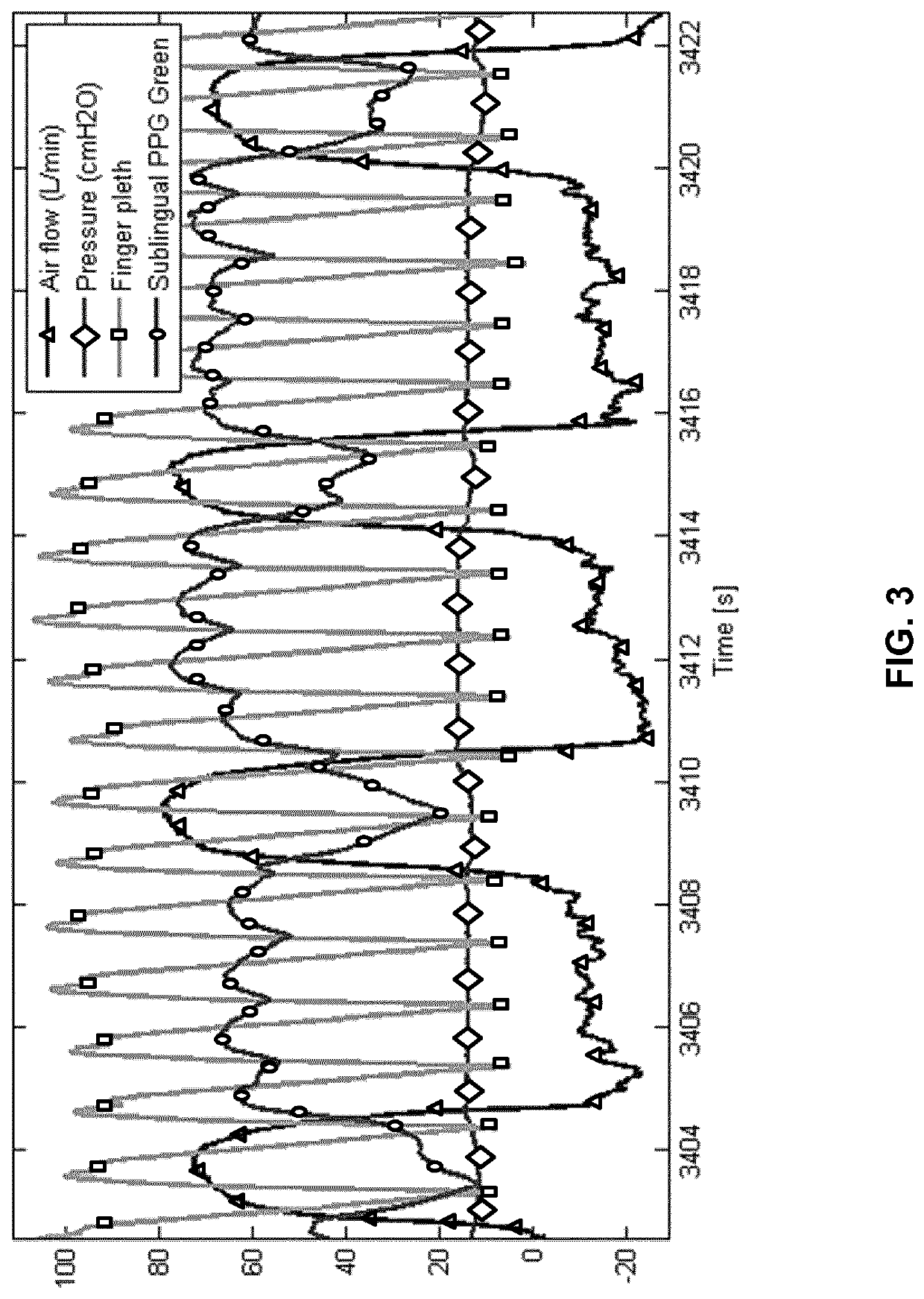Patient monitoring
a technology for monitoring the cardiorespiratory function of patients, applied in the field of patient monitoring, can solve the problems of catheters and doppler ultrasounds which are invasive and not applicable in night-time, and achieve the effect of reducing the processing requirements or capabilities of other components
- Summary
- Abstract
- Description
- Claims
- Application Information
AI Technical Summary
Benefits of technology
Problems solved by technology
Method used
Image
Examples
Embodiment Construction
[0067]Proposed embodiments relate to approaches and tools for monitoring cardio-respiratory function of a patient. A sublingual sensor unit may be employed (e.g. positioned) at or near a sublingual vein of the patient's tongue so as to detect light or sound from the sublingual vein or sublingual vasculature. A sensor output signal may then be generated based on the detected light or sound. This signal may be used (e.g. processed) to determine a value of cardio-respiratory parameter of the patient.
[0068]Embodiments are therefore based on using the sublingual vein or vasculature of a patient's tongue to detect variations in blood volume / flow in the sublingual veins / vasculature. This approach leverages the fact that the sublingual vein lies close to the sublingual (i.e. bottom or underside) surface of the tongue and that the sublingual skin is thin and optically transparent. Such properties make the sublingual side of the tongue highly-suited for detecting and monitoring blood flow or ...
PUM
 Login to View More
Login to View More Abstract
Description
Claims
Application Information
 Login to View More
Login to View More - R&D
- Intellectual Property
- Life Sciences
- Materials
- Tech Scout
- Unparalleled Data Quality
- Higher Quality Content
- 60% Fewer Hallucinations
Browse by: Latest US Patents, China's latest patents, Technical Efficacy Thesaurus, Application Domain, Technology Topic, Popular Technical Reports.
© 2025 PatSnap. All rights reserved.Legal|Privacy policy|Modern Slavery Act Transparency Statement|Sitemap|About US| Contact US: help@patsnap.com



